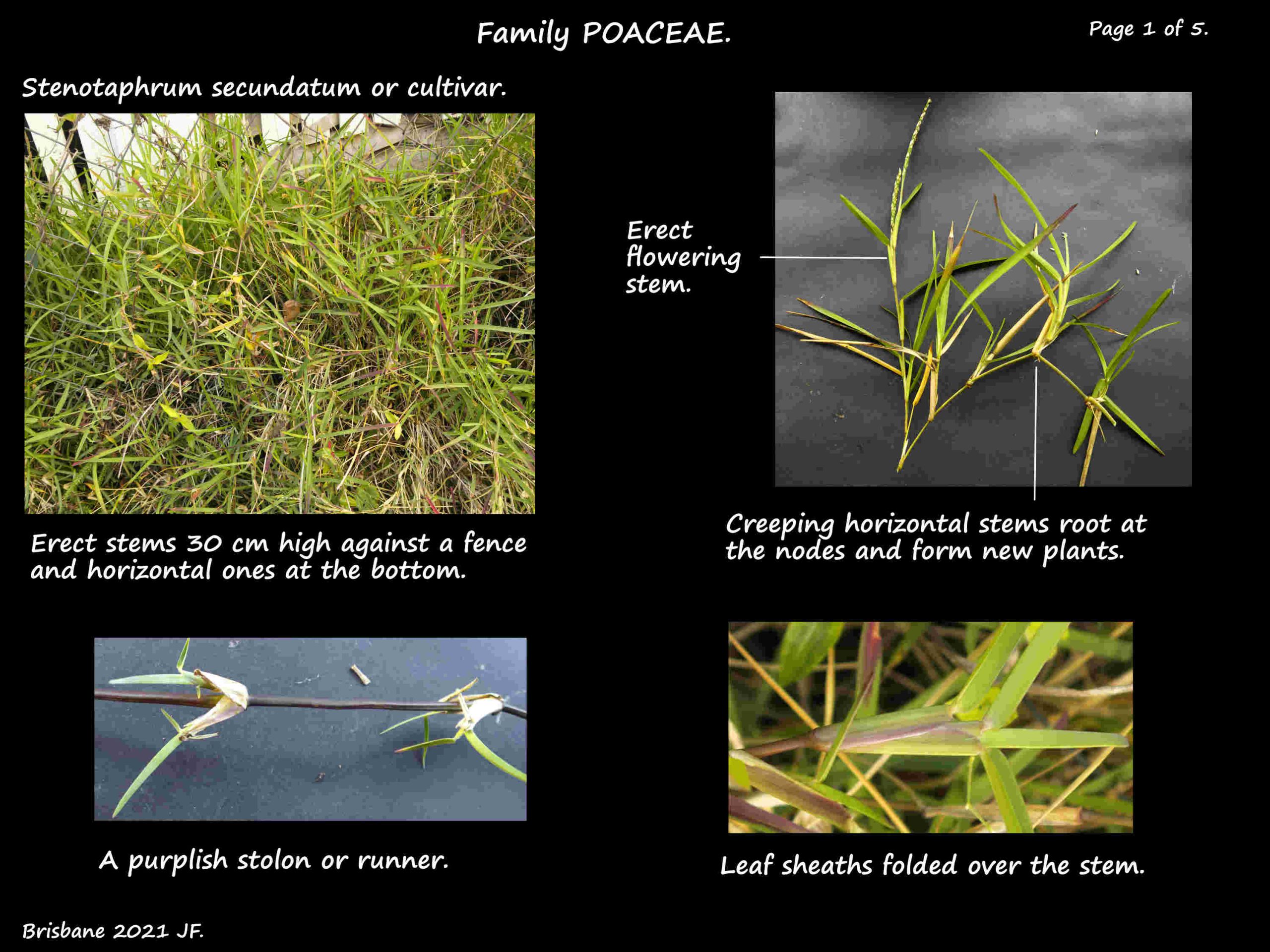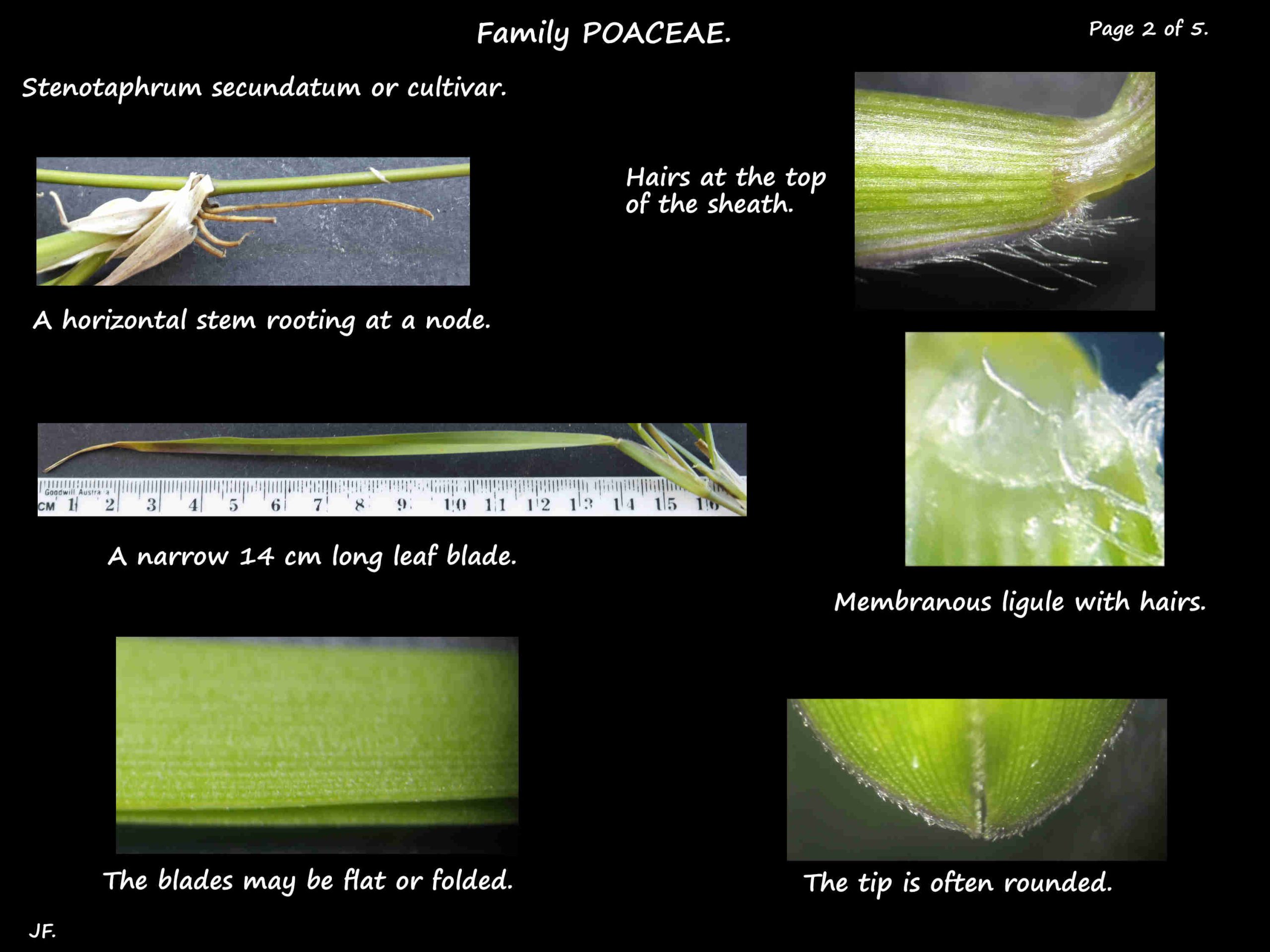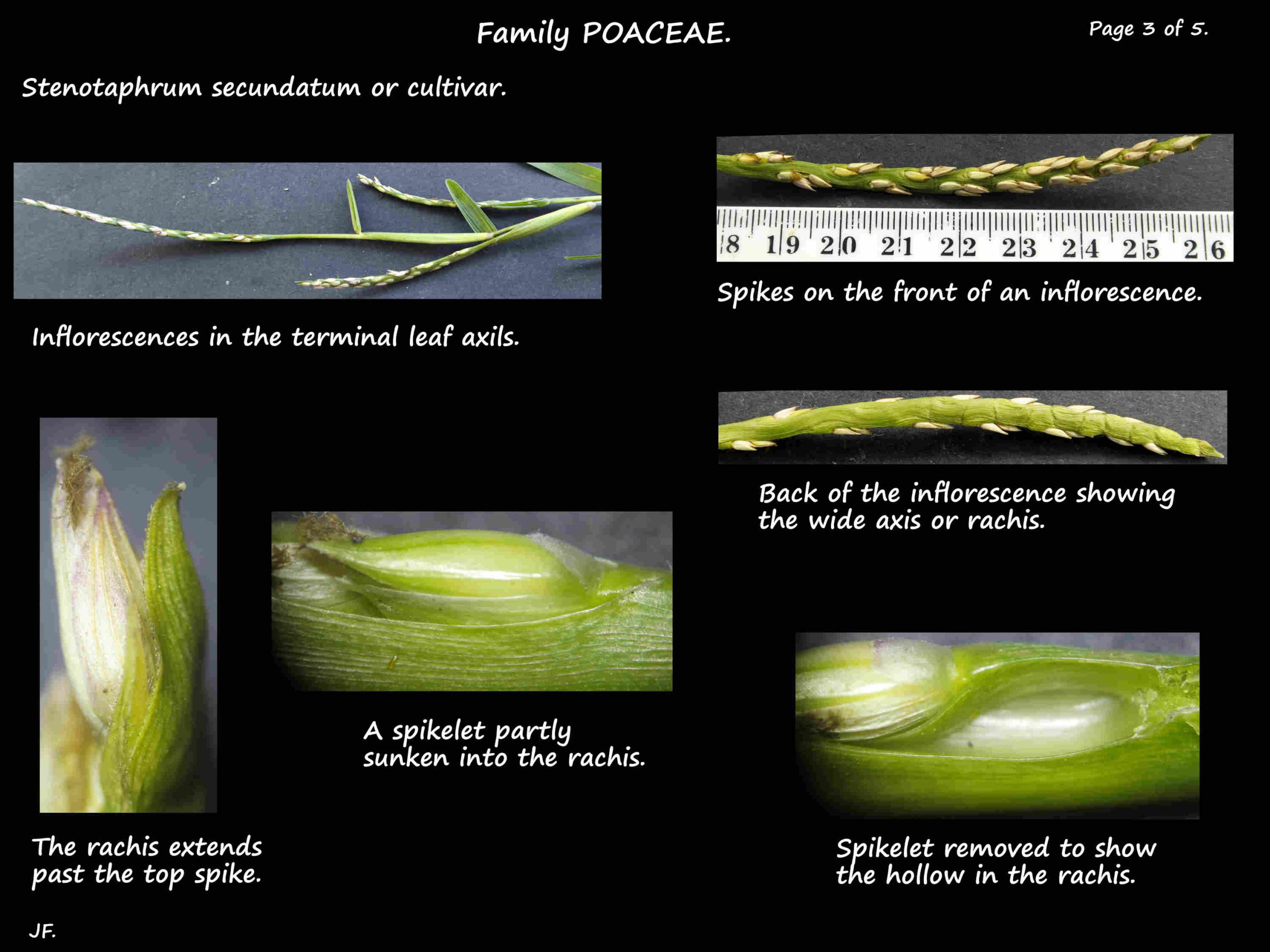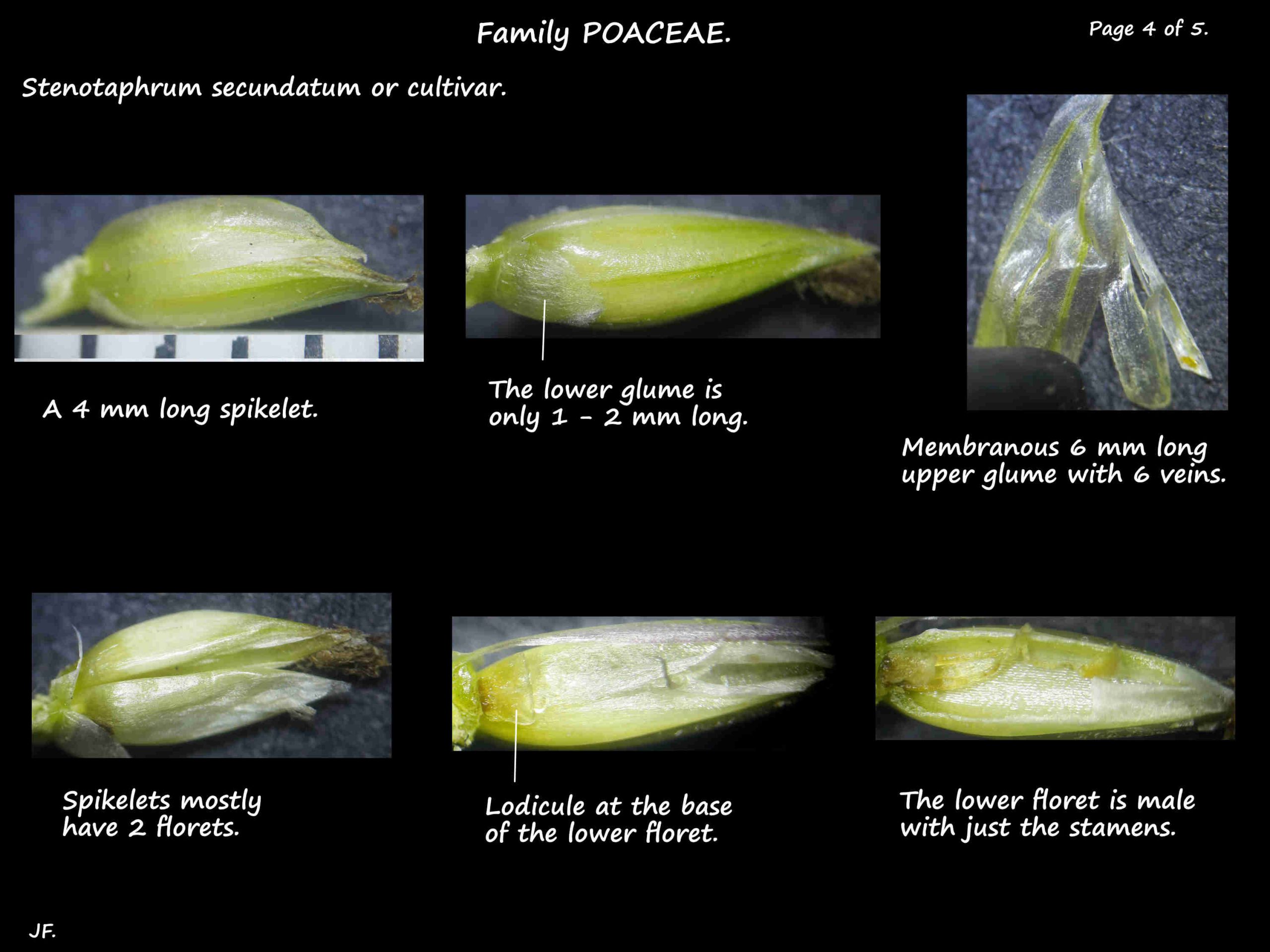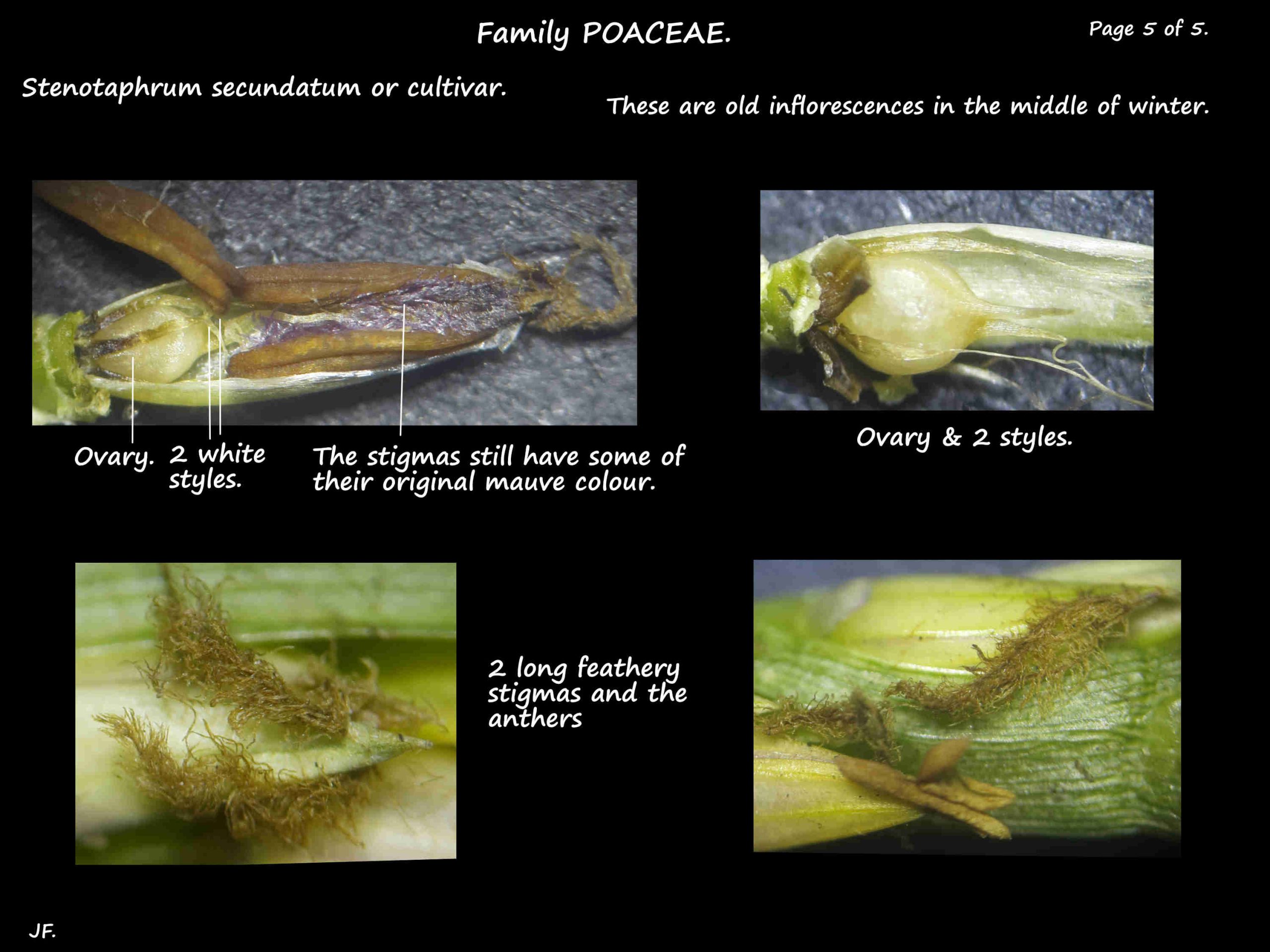Stenotaphrum secundatum.
Family Poaceae > Subfamily Panicoideae > Supertribe Panicodae > Tribe Panicea > Subtribe Cenchrinae.
Two of the 7 species are found in Australia one native (S. micranthum) and one naturalised (S. secundatum).
Known as Buffalo or St. Augustine grass, S. secundatum and its cultivars are commonly used as
lawn grasses although they are environmental weeds.
A perennial grass that can grow up to 30 or 40 cm high.
Most of the stems are creeping or prostrate but the flowering stems are erect.
The horizontal stems (stolons or runners) root at the nodes.
These, with the leaves, form a dense layer of grass.
There are also underground stems or rhizomes.
The narrow leaves are alternately arranged but when very close can appear to be opposite.
The blades are 2 to 15 cm long and the base runs down the stem as an open sheath.
There may be some hairs at the junction and on the upper part of the sheath.
The blades mostly have a rounded tip and can be flat or folded.
The ligule is a narrow membrane with short hairs.
The spike-like inflorescences are up to 10 cm long.
The wide central axis is thick and flattened with the spikes or racemes down one side.
These are partially sunken into hollows in the axis.
The tip of the axis extends past the top spike.
The spikes are up to 1 cm long with 2 (1 or 3, 5) closely spaced spikelets.
The spikelets have no stalk or a rudimentary one.
They have 2 bracts (glumes) and mostly 2 florets that are 4 to 5 mm long.
The lower glume is up to 2 mm long and the upper 6 mm one has up to 9 veins.
The lower floret is usually male with 3 stamens but may be barren with just palea and lemma.
The fertile floret has a lemma up to 4.5 mm long with 5 nerves and a palea.
There are 3 stamens and an ovary with 2 feathery mauve stigmas.
Seeds, when produced by the fertile flower, are 1.5 mm long, dark and ovoid.
They mainly reproduce by the stolons.
Well known cultivars include ‘Sir Walter’ and ‘Raleigh’.
They vary in leaf size and colour, height, stolon colour, disease resistance and temperature tolerance.
J.F.
